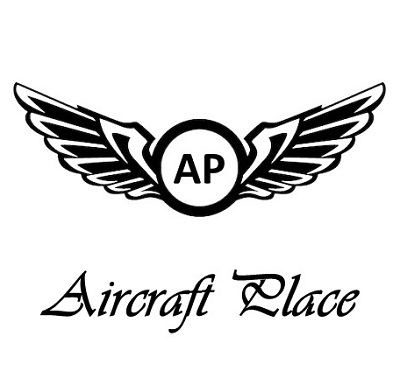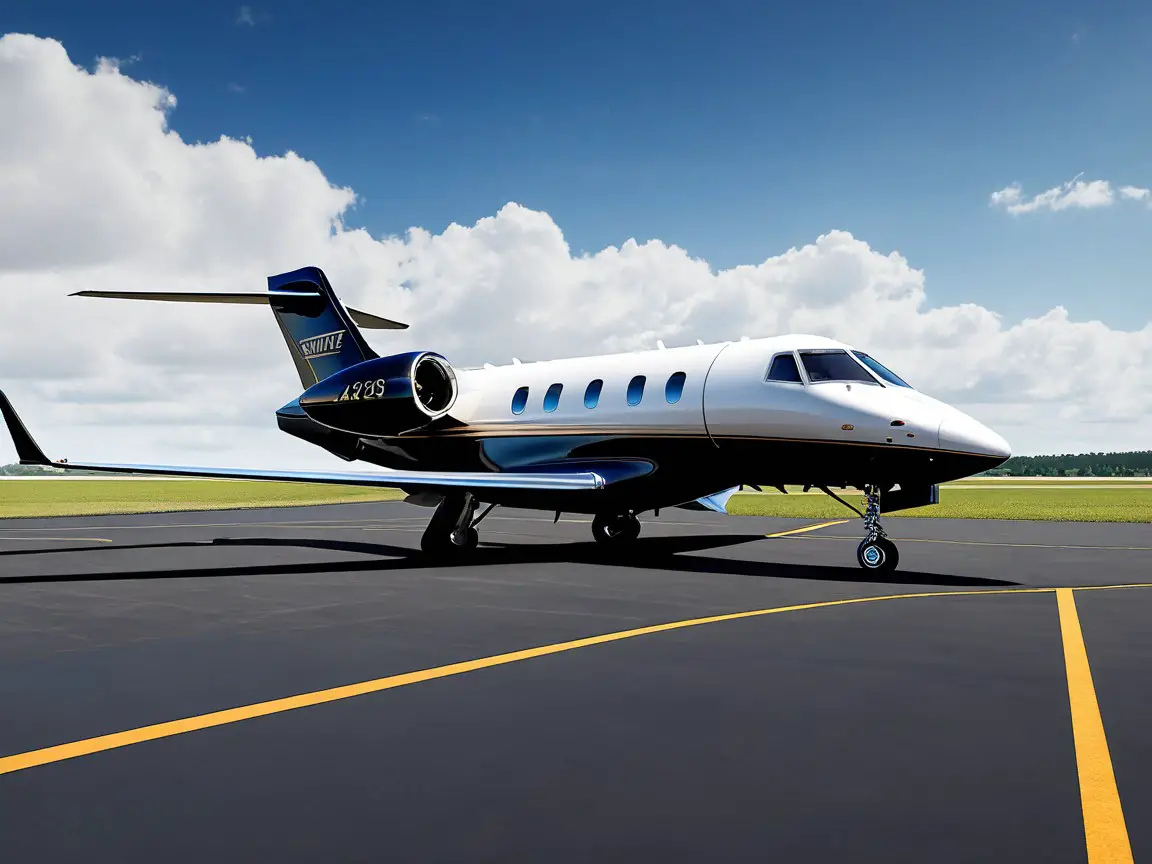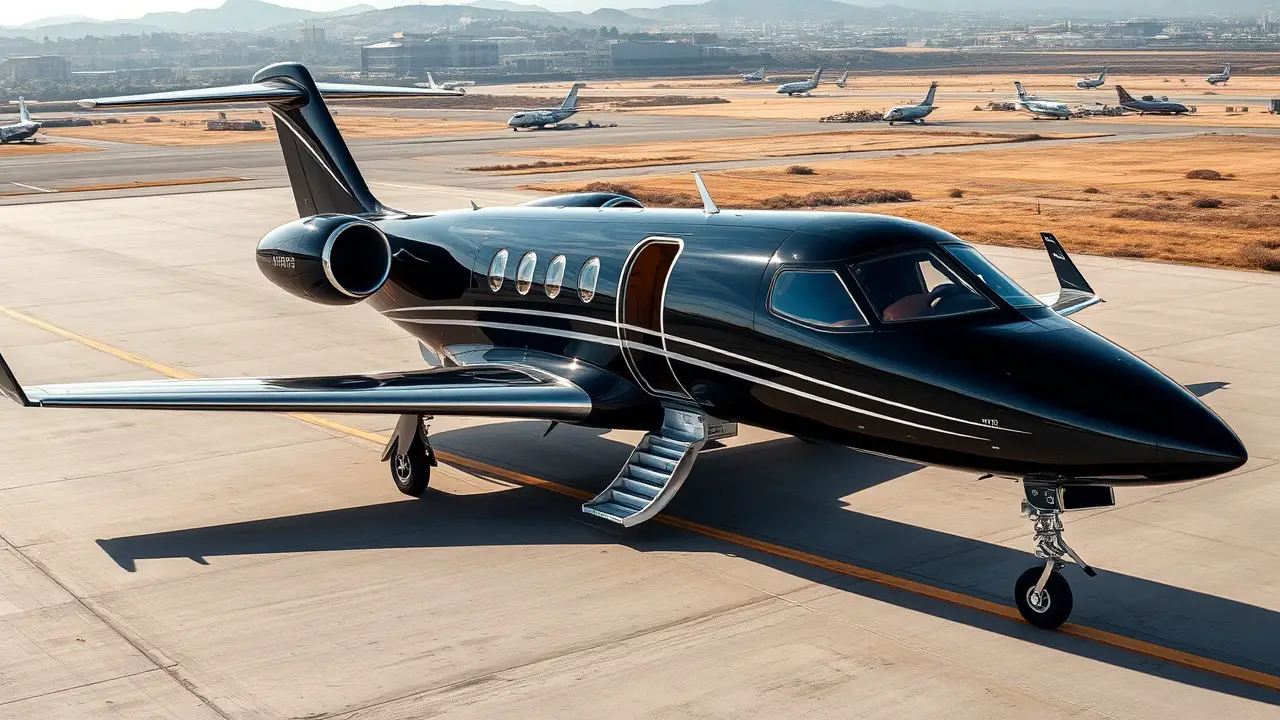Private jet maintenance is crucial for ensuring the safety and optimal performance of your aircraft. Private jet maintenance is crucial for safety and performance.
Regular inspections, servicing, and adherence to manufacturer recommendations ensure optimal functionality and extend the aircraft’s lifespan.
Contents
By implementing a comprehensive maintenance program, you can extend the lifespan of your private jet while complying with aviation regulations.
Regular preventative maintenance helps identify and address potential issues before they escalate, minimizing the risk of unscheduled maintenance that could disrupt your operations.
With a dedicated maintenance team overseeing your private jet’s upkeep, you can have peace of mind knowing that every aspect of your aircraft is meticulously cared for.
From routine inspections to scheduled repairs and upgrades, a proactive approach to maintenance ensures that your private jet remains in top condition.
Stay tuned to discover how proper aircraft management can optimize safety, performance, and longevity for your private jet.

Importance and Benefits of Proper Private Jet Maintenance
Regular maintenance of private jets is crucial for ensuring safe and efficient flights. By following proper maintenance procedures.
The risk of mechanical failures during flights can be significantly reduced. Regular inspections help identify potential issues before they become major problems.
Reducing the Risk of Mechanical Failures
Private jet maintenance plays a vital role in minimizing the chances of mechanical failures during flights. When a private jet is not properly maintained.
There is an increased risk of malfunctions or breakdowns that could jeopardize the safety of passengers and crew members.
However, by adhering to strict maintenance schedules and procedures, these risks can be mitigated.
Regular inspections are conducted on various components of the aircraft, including engines, avionics systems, landing gear, and control surfaces.
These inspections help identify any signs of wear and tear or potential defects that could compromise the aircraft’s performance.
By addressing these issues promptly through repairs or replacements, the likelihood of unexpected failures during flight is greatly reduced.
Identifying Potential Issues Early On
One significant benefit of regular private jet maintenance is the ability to identify potential issues early on.
Through routine inspections and preventive maintenance tasks, technicians can detect any signs of impending problems before they escalate into major malfunctions.
For example, during scheduled engine inspections.
Technicians closely examine various components such as turbine blades and fuel systems for any signs of damage or abnormal wear patterns.
By catching these issues early on, necessary repairs or replacements can be made proactively to prevent more extensive damage or even engine failure.
Higher Resale Value
Properly maintaining a private jet also has financial benefits in terms of resale value.
Well-maintained aircraft generally command higher prices in the market compared to those with a history of inadequate maintenance practices.
Prospective buyers are often willing to pay a premium for an aircraft that has been consistently serviced and cared for by reputable maintenance providers.
This higher resale value not only helps owners recoup their initial investment but also reflects the overall quality and reliability of the aircraft.

Factors Affecting Cost of Private Jet Maintenance
To understand the cost of maintaining a private jet, several factors come into play.
These factors can impact the overall expenses and determine how much it will cost to keep your aircraft in top condition.
Age and Model of the Aircraft
The age and model of the aircraft are significant factors that influence maintenance costs. Older jets may require more frequent repairs and replacements due to wear and tear over time.
Sourcing spare parts for older models might be more challenging or expensive, further driving up maintenance costs.
On the other hand, newer models often benefit from advanced technology and improved materials that may reduce the need for extensive repairs.
Complexity and Sophistication of Avionics Systems
Another factor affecting private jet maintenance costs is the complexity and sophistication of avionics systems.
Advanced avionics systems enhance safety features, navigation capabilities, and communication systems onboard the aircraft.
However, these intricate systems require specialized expertise to maintain properly. The more complex the avionics system is, the higher the maintenance costs are likely to be.
Frequency and Intensity of Usage
The frequency and intensity with which a private jet is used also impact its overall maintenance costs.
Regular use puts additional stress on various components of an aircraft, increasing wear and tear.
If a jet is frequently flown long distances or undergoes strenuous operations such as landing on rough airstrips or flying through extreme weather conditions.
It will require more frequent inspections, repairs, and replacements.
Other Factors to Consider
While these three factors play a significant role in determining private jet maintenance costs, there are other considerations as well:
- Manufacturer Recommendations: Following manufacturer-recommended service intervals is crucial for maintaining airworthiness standards but can contribute to higher expenses.
- Geographical Location: The location where you operate your private jet can affect maintenance costs due to variations in labor rates or availability of repair facilities.
- Maintenance Program: Opting for a comprehensive maintenance program or enrolling in an aircraft maintenance plan can help manage costs by spreading them out over time.
- Type of Maintenance Provider: The choice of maintenance provider also affects costs. Some providers may offer competitive pricing or specialized expertise, while others may charge premium rates.
Understanding the factors that influence private jet maintenance costs is essential for budgeting and planning purposes.
By considering the age and model of the aircraft, the complexity of avionics systems, and the frequency and intensity of usage, owners can estimate potential expenses more accurately.

Overview of Private Jet Maintenance Procedures
Routine checks, scheduled maintenance, and unscheduled repairs are all essential aspects of private jet maintenance.
These procedures ensure that the aircraft remains in optimal condition and operates safely. Let’s take a closer look at each of these maintenance requirements.
Routine Checks: Engine Inspections, Fluid Analysis, and System Tests
Regular routine checks are crucial for identifying any potential issues before they become major problems. Here are some common tasks involved in routine maintenance:
- Engine Inspections: Regular inspections of the engines help detect any signs of wear or damage. Mechanics carefully examine various components such as the turbine blades, oil filters, and exhaust systems to ensure they are functioning properly.
- Fluid Analysis: Monitoring fluid levels and analyzing their quality is an important part of routine maintenance. This includes checking engine oil, hydraulic fluid, and fuel samples for contaminants or abnormal levels. By conducting fluid analysis, mechanics can identify potential issues early on.
- System Tests: Testing various systems on the aircraft is another crucial aspect of routine checks. This involves evaluating the functionality of electrical systems, avionics equipment, landing gear mechanisms, and other critical components to ensure they are operating correctly.
Scheduled Maintenance: Component Replacements and Software Updates
Scheduled maintenance involves planned tasks that need to be performed at specific intervals or hours flown by the aircraft. Here’s what it typically entails:
- Component Replacements: Over time, certain components may reach their recommended lifespan or require replacement due to wear and tear. Scheduled maintenance involves replacing items like filters, belts, hoses, spark plugs, and other parts as per manufacturer recommendations.
- Software Updates: Just like our smartphones or computers need software updates for optimal performance; private jets also require software updates for their onboard systems such as navigation systems or flight management computers. These updates ensure that the aircraft operates with the latest technology advancements.
Unscheduled Repairs: Addressing Unexpected Issues
Despite regular maintenance, unforeseen issues can still occur during the operation of a private jet. Unscheduled repairs are necessary to address these unexpected problems promptly.
Here’s what they involve:
- Troubleshooting: When an issue arises, mechanics must troubleshoot and diagnose the problem accurately. This may involve conducting tests, inspecting specific components, or using specialized equipment to identify the root cause.
- Repair or Replacement: Once the problem is identified, mechanics will proceed with either repairing or replacing the faulty component or system. This could include fixing wiring issues, repairing hydraulic systems, or replacing malfunctioning avionics equipment.
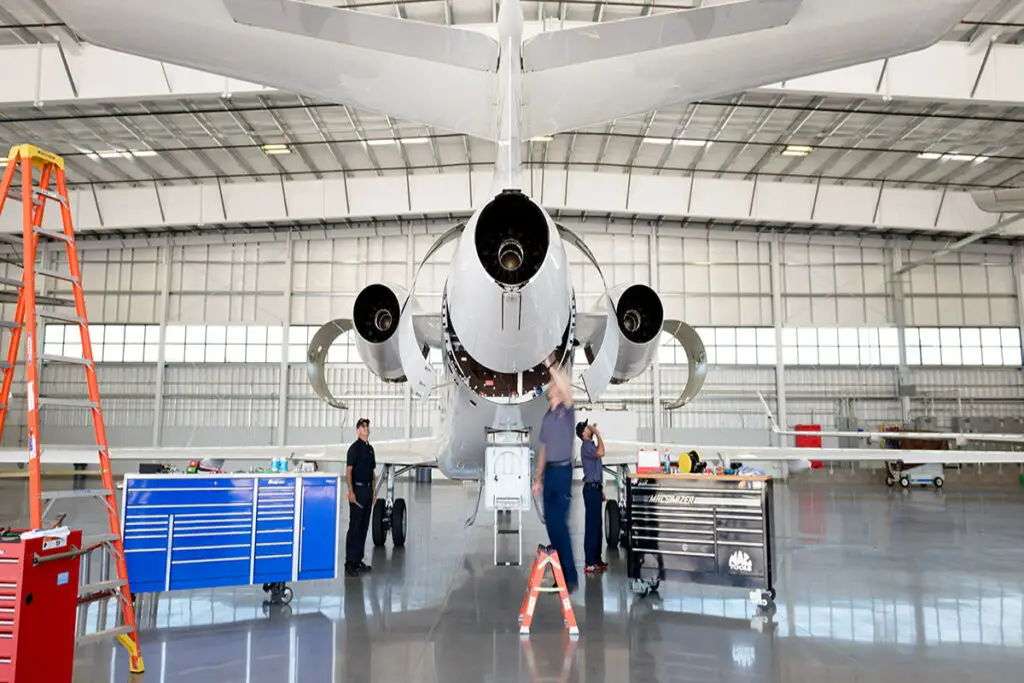
Finding a Qualified Private Jet Maintenance Provider
To ensure your private jet receives top-notch care, it’s crucial to find a qualified maintenance provider. Here are some key factors to consider when selecting the right team for the job:
Certifications from Reputable Aviation Authorities
Look for private jet maintenance providers that hold certifications from reputable aviation authorities such as the Federal Aviation Administration (FAA).
These certifications indicate that the service provider has met stringent standards and regulations set by industry experts.
Working with certified providers ensures that your aircraft will be handled by knowledgeable technicians who adhere to the highest safety and quality standards.
Experience with Similar Aircraft Models or Brands
Consider the experience of the maintenance provider in working on similar aircraft models or brands.
Different private jets have unique systems, components, and maintenance requirements.
Therefore, it is essential to choose a service center that has expertise in servicing your specific type of aircraft.
Experienced technicians will be familiar with common issues, troubleshooting methods, and best practices for maintaining your jet.
Reviews and Recommendations from Other Private Jet Owners
Reading reviews or seeking recommendations from other private jet owners can provide valuable insights into a maintenance provider’s reputation and reliability.
Online forums and aviation communities are excellent resources for gathering firsthand experiences from fellow aircraft owners.
Pay attention to feedback regarding communication skills, timeliness, attention to detail, and overall customer satisfaction. When researching potential maintenance providers.
Keep an eye out for positive testimonials highlighting their efficiency, professionalism, and ability to address complex technical issues promptly.
It’s important not only to consider individual reviews but also to assess patterns or trends among multiple reviews.
This helps paint a clearer picture of what you can expect from a particular service provider.
Remember that finding a reliable maintenance team is not just about fixing problems but also preventing them through regular inspections and proactive measures.

Frequency of Private Jet Maintenance Inspections
To keep a private jet in optimal condition, routine inspections are crucial. These inspections help identify any potential issues and ensure that the aircraft is safe to fly.
The frequency of these maintenance inspections is typically determined by the manufacturer’s guidelines, which provide specific intervals for inspection.
Maintenance inspections can be dictated by various factors such as flight hours, cycles, or calendar time.
The manufacturer’s recommendations take into account these factors to determine when inspections should occur.
For example, after a certain number of flight hours or cycles, an inspection may be necessary to check for wear and tear on critical components.
Certain components of a private jet may require more frequent checks than others.
For instance, the engines might need regular inspections due to their high usage and importance in ensuring safe and efficient operation.
Other critical systems like avionics or hydraulic systems may also require frequent checks to maintain their reliability.
It is important for private jet owners and operators to follow these recommended inspection intervals diligently.
Regular maintenance inspections not only ensure the safety of the aircraft but also help prevent costly repairs down the line.
By identifying and addressing any potential issues early on, owners can avoid unexpected breakdowns during flights.
While routine inspections are essential, it’s worth noting that they are not the only type of maintenance required for private jets.
In addition to scheduled inspections, there are also unscheduled or non-routine maintenance activities that may arise due to unforeseen circumstances or specific operational requirements.
Private jet owners should work closely with qualified maintenance providers who have experience with their particular aircraft model.
These experts will have a deep understanding of the manufacturer’s guidelines and can advise on the appropriate frequency of inspections based on individual usage patterns and operating conditions.

Maintaining the Interior of Your Private Jet
To ensure that your private jet remains in top-notch condition, it’s crucial to pay attention to the interior maintenance.
Here are some essential tips for keeping your private jet’s interior looking pristine and functioning flawlessly.
Clean Regularly for Aesthetics
One of the key aspects of maintaining your private jet’s interior is regular cleaning. Upholstery, carpets, and surfaces should be cleaned meticulously to preserve their aesthetics.
Dusting off surfaces, vacuuming carpets, and wiping down upholstery with appropriate cleaners can help keep the cabin looking fresh and inviting.
Inspect Cabin Amenities for Functionality
Regular inspections of cabin amenities are vital to ensure they remain functional during flights.
Entertainment systems, such as screens or audio devices, should be checked for any glitches or malfunctions.
Lavatories must be inspected thoroughly to guarantee proper functioning and cleanliness.
Practice Proper Storage
Proper storage practices play a significant role in maintaining the interior furnishings of your private jet.
When not in use, make sure to store items securely and safely to prevent damage or wear.
This includes stowing away loose objects, securing movable furniture, and protecting delicate materials from potential harm.
Address Maintenance Tasks Promptly
Addressing any issues promptly is crucial. If you notice any signs of wear or malfunction within the cabin area, it’s important to take immediate action.
Whether it’s a broken seat mechanism or a faulty lighting fixture, addressing these maintenance tasks promptly can prevent further damage and ensure passenger comfort.
Seek Professional Help for Repairs
While routine maintenance tasks can often be handled by aircraft owners themselves or their designated crew members, certain repairs may require professional assistance.
It’s essential to identify when repairs exceed your expertise and seek the help of qualified technicians who specialize in private jet maintenance.
Maintaining the interior of your private jet is not only about aesthetics but also about ensuring the safety and comfort of your passengers.
By adhering to these maintenance practices, you can prolong the lifespan of your private jet’s interior while providing a luxurious and enjoyable flying experience for all onboard.
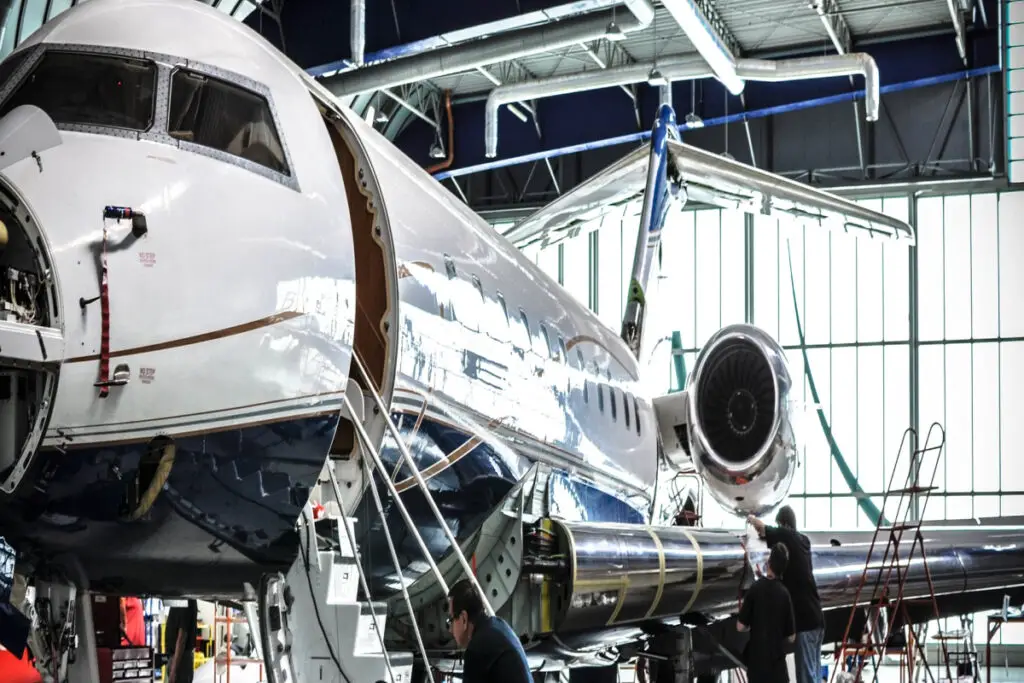
The Significance of Private Jet Maintenance
Proper maintenance of a private jet is crucial for several reasons. It ensures compliance with safety regulations set by aviation authorities.
Offers peace-of-mind during flights, and helps prevent costly repairs while extending the lifespan of the aircraft.
Compliance with Safety Regulations
Private jets are subject to strict safety regulations imposed by aviation authorities. Regular maintenance plays a vital role in ensuring that these regulations are met.
By adhering to scheduled inspections and maintenance procedures, private jet owners can be confident that their aircraft is in optimal condition and meets all necessary safety standards.
This includes checks on critical components such as engines, avionics systems, hydraulics, and fuel systems.
Peace-of-Mind During Flights
When you step onto a private jet for your journey, you want nothing more than a smooth and worry-free experience.
Proper maintenance contributes significantly to this peace-of-mind during flights.
Knowing that your aircraft has been thoroughly inspected and maintained instills confidence in both passengers and crew members.
It eliminates concerns about potential mechanical failures or malfunctions mid-flight, allowing everyone on board to relax and enjoy the journey.
Prevention of Costly Repairs
Neglecting regular maintenance can lead to more significant problems down the line, resulting in expensive repairs or even grounding the aircraft temporarily.
By implementing a proactive maintenance plan, private jet owners can identify any issues early on before they escalate into major problems.
This includes routine checks on engines, airframes, landing gear, electrical systems, and other critical components.
Addressing minor issues promptly not only prevents further damage but also saves money in the long run by avoiding costly repairs or replacements.
Extension of Aircraft Lifespan
Private jets are substantial investments that require proper care to maximize their lifespan. Regular maintenance is key to achieving this goal.
By following manufacturer-recommended service intervals and conducting thorough inspections.
Private jet owners can ensure that their aircraft remains in optimal condition for years to come.
This includes routine tasks such as engine oil changes, filter replacements, and inspections of structural components.
Taking care of the aircraft’s maintenance needs helps preserve its value and extends its overall lifespan.
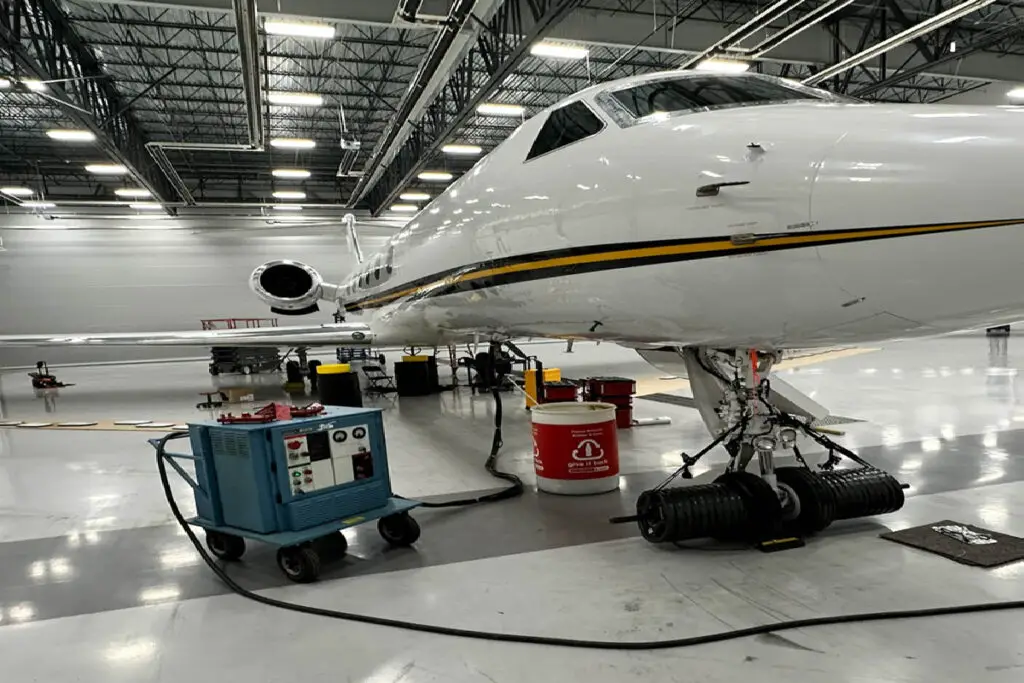
Conclusion
In conclusion, proper private jet maintenance is of utmost importance for the safety, performance, and longevity of your aircraft.
By adhering to regular maintenance procedures, you can ensure that your private jet operates at its optimal level, minimizing the risk of mechanical failures and maximizing its lifespan.
Moreover, routine inspections allow for early detection of potential issues, enabling timely repairs and preventing more extensive damage.
To maintain the value and reliability of your investment in a private jet, it is crucial to find a qualified maintenance provider who specializes in these high-end aircraft.
They possess the expertise and knowledge necessary to handle the intricate systems and components unique to private jets.
Staying proactive with interior maintenance ensures a comfortable and luxurious flying experience for you and your passengers.
By prioritizing private jet maintenance, you not only safeguard the well-being of those onboard but also preserve the resale value should you decide to upgrade or sell your aircraft in the future.
Remember that regular inspections are essential for complying with aviation regulations as well.
So don’t overlook this critical aspect; make sure to schedule routine maintenance checks with a reputable provider.
FAQs
1. What factors affect the cost of private jet maintenance?
The cost of private jet maintenance can vary depending on several factors such as the type and model of the aircraft, its age, flight hours accumulated, required repairs or replacements, geographical location for service availability, and even market demand for specific types of jets.
2. How frequently should I have my private jet inspected?
The frequency of private jet inspections depends on various factors including flight hours logged since the last inspection or major overhaul, manufacturer recommendations outlined in the aircraft’s manual or service bulletins issued by them or regulatory authorities like FAA/EASA/Transport Canada etc.
3. Can I perform maintenance on my private jet myself?
While there may be certain minor tasks that you can handle yourself, it is highly recommended to leave the majority of maintenance procedures to certified professionals. Private jets are complex machines, and improper maintenance can lead to safety hazards or void warranties.
4. How do I find a qualified private jet maintenance provider?
To find a qualified private jet maintenance provider, consider factors such as their experience in servicing your specific make and model of aircraft, certifications held (e.g., FAA Part 145), customer reviews/testimonials, adherence to regulatory standards, availability of spare parts/accessories, and overall reputation in the industry.
5. What types of inspections are involved in private jet maintenance?
Private jet maintenance typically involves various types of inspections including routine checks (daily/weekly/monthly), scheduled inspections (100-hour/annual), major overhauls (C-checks/D-checks), and specialized inspections based on manufacturer recommendations or operational requirements.
